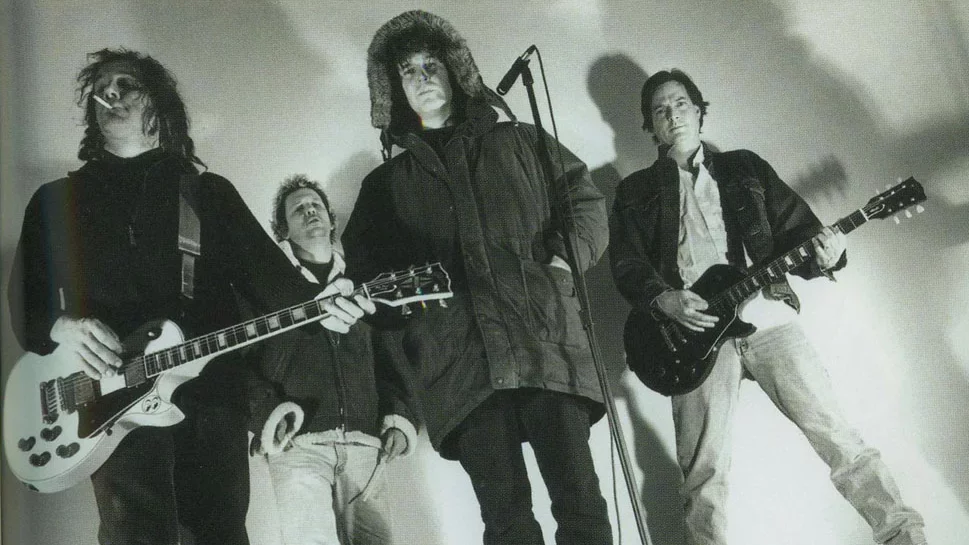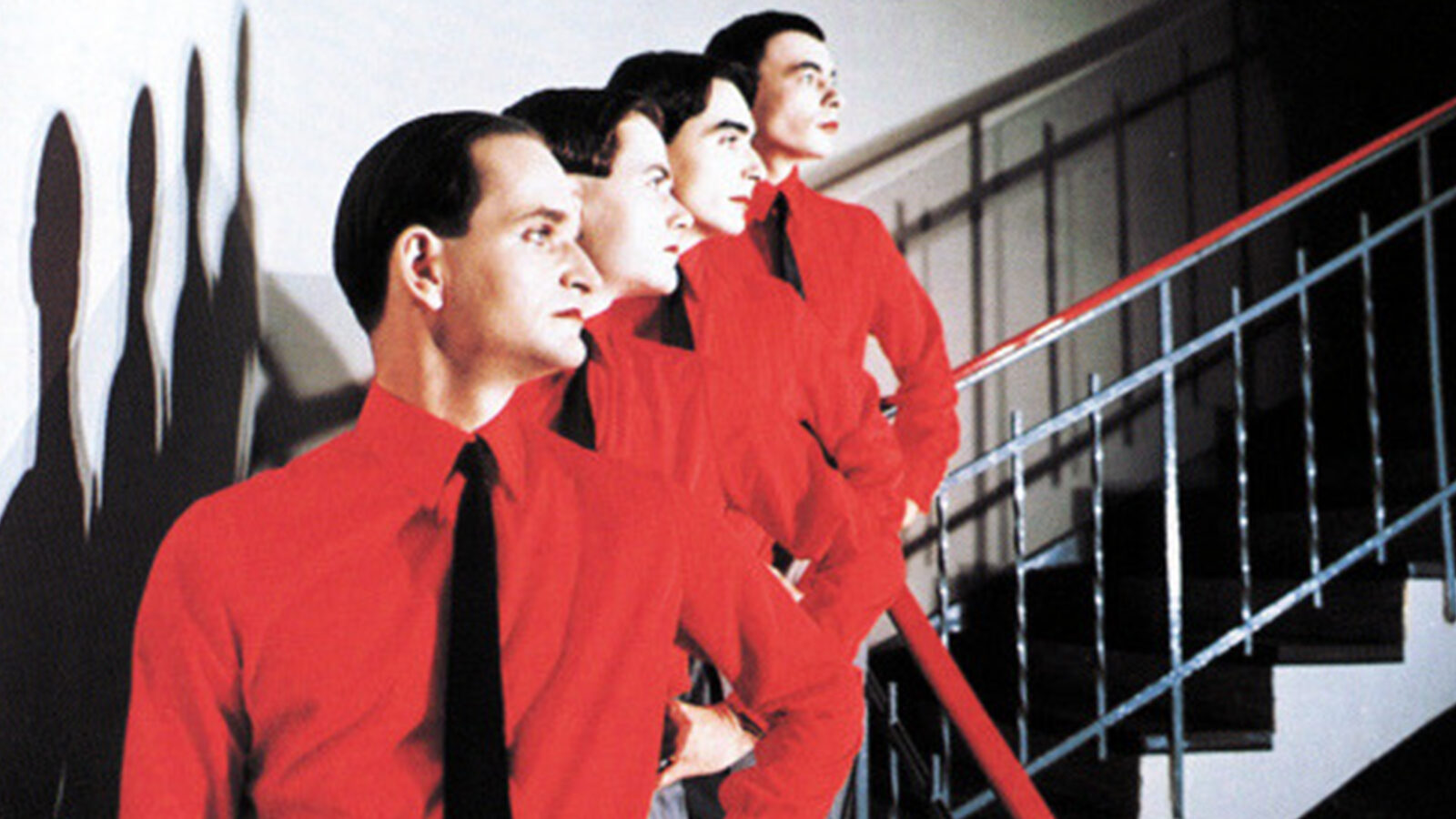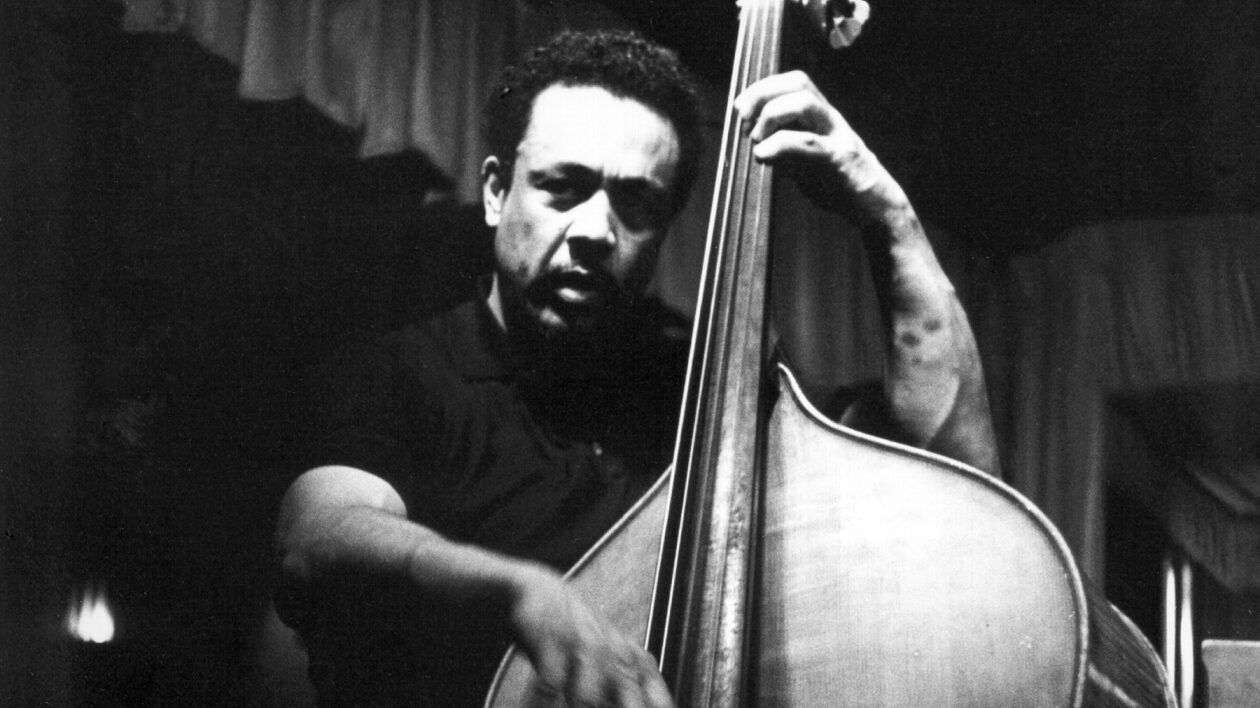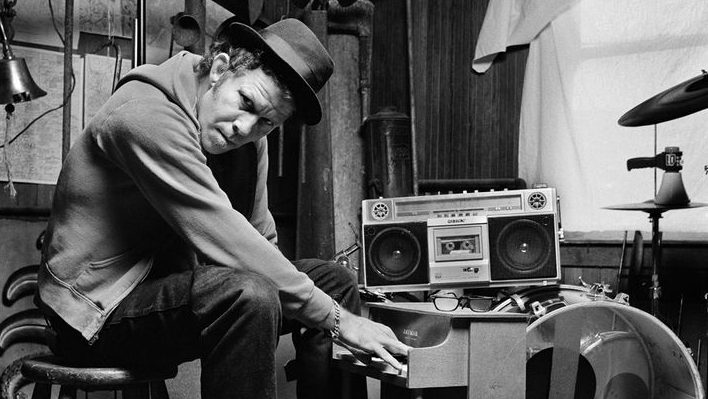
Music nerds love ranked lists. Music nerds love thoughtful commentary. Music nerds love carefully curated playlists. Catalog Crawl provides all of these things and more. In these features, Strange Currencies takes an exhaustive look at the discographies of our favorite artists – the ones who reside at the core of our music obsession.
While he is one of those names that most music fans have at least a passing knowledge of, Tom Waits can be a difficult artist for whom to find an entry point. With a career that spans half a century, Waits has been both durable and ever-changing – carving out a niche, only to move in a dramatically different direction when inspiration strikes. To make matters even more difficult, Waits’ most idiosyncratic albums are among his most beloved, and while any fan of great songwriting is bound to find something to love in a record like 1985’s masterful Rain Dogs, starting there isn’t a surefire path to fandom.
Tom Waits emerged on the crowded Southern California singer-songwriter scene in the early seventies, establishing himself as a jazz-inspired performer with a penchant for documenting the nightlife. By the mid-seventies, Waits began incorporating a stronger element of performance art into his stage persona – exemplified by the quasi-live album, Nighthawks at the Diner. Mixing dark humor with his formidable compositional talent, Waits proved a refreshing antidote to the overly-sincere singer-songwriters of the era (not wholly unlike the satirical contemporary work of Randy Newman, or Waits’ Asylum label-mate, Warren Zevon).
In 1980, Waits married Kathleen Brennan, who would also become his songwriting partner. It was at this time that he made a deliberate shift away from the piano-based balladeering of his early career, taking a dive off of the deep end by embracing eclectic instrumental arrangements, demented character studies, and a vocal range that included a husky growl which would – for many – become his defining artistic signature. While names like Louis Armstrong, Howlin’ Wolf, and Captain Beefheart would be bandied about in reviews of Waits’ new records, works like the brilliant reinvention of 1983’s Swordfishtrombones were the creation of a true original.
As the acclaim for his mid-eighties classics poured in, Waits became a celebrated figure in both mainstream and indie circles – even if he didn’t fit neatly into either camp. Covers of his songs by established stars, and collaborations with a variety of underground favorites, would deepen his credentials throughout the industry, and by the time of 1999’s critically hailed Mule Variations, Waits was a genuine institution. However, acclaim, acceptance, and age would do little to temper his more outré artistic impulses. The 2000s would arguably be his most inventive decade to date, as Waits fully embraced composing for stage productions and released forward-thinking records like 2004’s Real Gone. While Waits has laid low for much of the last decade – his most recent release was 2011’s Bad as Me – he continues to expand on his resume as an actor, and has left fans of his music anxiously awaiting his next moves.
A thoroughly revered figure, Tom Waits has amassed a body of work that is impressive in both its scope and scale. Though potentially imposing to the newcomer, there are plenty of accessible points of departure into his world. This list provides a highly-subjective ranking of Waits’ studio catalog (including two film soundtracks and the 2006 compilation of mostly-newly-released material, Orphans), plus his two officially-released live albums. In addition, I have selected one song from each studio release (the three-part Orphans gets three picks) to create an introductory Spotify playlist to Waits’ work. Enjoy!
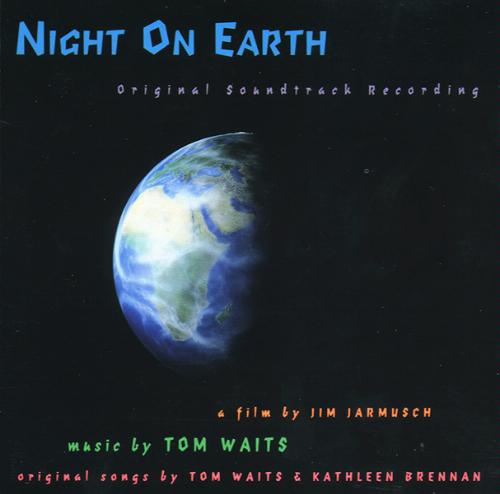
Night on Earth [Soundtrack]
1991
(5.8)
22
A pretty easy choice for the lowest point in Tom Waits’ discography, the soundtrack to Night on Earth is a mostly-instrumental collection – one that reportedly works well in the context of the film, but that doesn’t stand too tall as its own listening experience. Most of the tracks are skeletal and sketch-like, but the best of them possess a similarly off-kilter charm to Waits’ mid-eighties work.
One for the playlist: It’s relatively slim pickings from what is generally regarded as Waits’ least essential album. The opening “Back in the Good Old World (Gypsy)” makes for a serviceable choice, as it’s one of the few tracks from Night on Earth that one could imagine finding its way onto a typical Waits album.
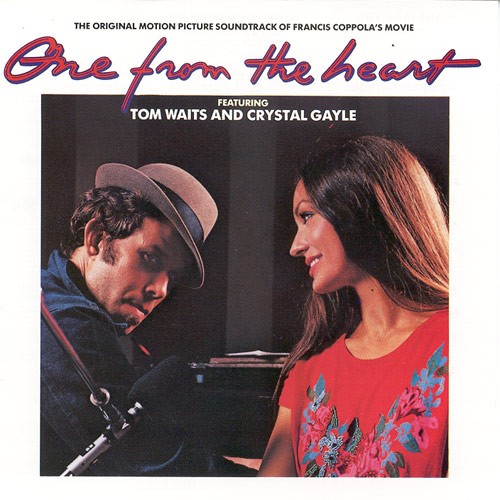
One From the Heart [Soundtrack]
(with Crystal Gayle)
1982
(6.3)
21
As collaborations between female vocalists and gruff-voiced male singers go, the 1982 soundtrack to Francis Ford Coppola’s One From the Heart isn’t exactly the second coming of Ella and Louis. While Tom Waits composed all of the songs, they don’t quite constitute his best material, and the pairing with country singer Crystal Gayle feels awkward at times. With that said, One From the Heart isn’t a bad listen; it’s just not likely what you’re gonna want to grab for when in the mood for Tom Waits.
Even if it stands among Waits’ least essential releases, One From the Heart represents a significant turning point in his career. First off, it was the final album in which Waits worked with Bones Howe, who had produced every one of his albums since 1974’s The Heart of Saturday Night. Secondly, writing and recording a soundtrack gave Waits the ability to work in an alternate reality, one whose heightened sense of surrealism (as evidenced in spots across this LP) would prove extraordinarily influential to his art. Finally – and most importantly – it was while working on the soundtrack that Waits met Kathleen Brennan, his future wife and songwriting partner. All of these developments would ultimately usher in the most rewarding phase of his career.
One for the playlist: Nothing against Crystal Gayle, but the Waits solo track “Broken Bicycles” is the easy choice here. First off, it’s the album’s best song. Second, its theme is similar to that of Swordfishtrombones‘ spectacular “Soldier’s Things,” which I regret will fall victim to the “one song per album” rule.
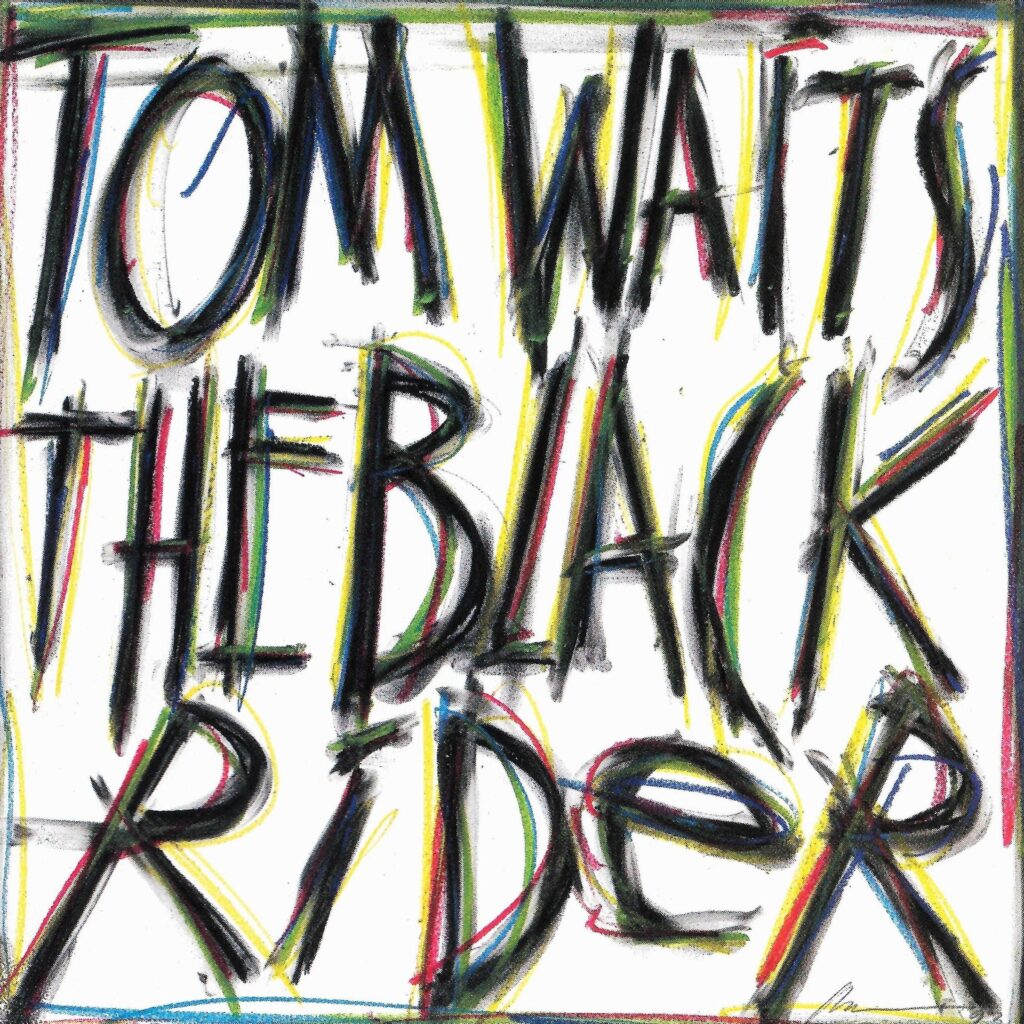
The Black Rider
1993
(6.8)
20
Rounding out the trio of Tom Waits’ least-acclaimed releases, 1993’s The Black Rider was another piece of musical accompaniment – this time for a theatre production by Robert Wilson and William S. Burroughs. Unlike Night on Earth or One From the Heart, The Black Rider generally feels like an actual Tom Waits album, albeit a weak one in comparison to the run of four classic records that preceded it. Even still, it packs in a handful of legitimate gems, among which is the title track, covered (twice) by Frank Black and the Catholics on their 2002 album, Black Letter Days.
One for the playlist: It was seeing Waits perform “November” on the Glitter and Doom tour that led me to pick up The Black Rider, so I’ll go with that one.
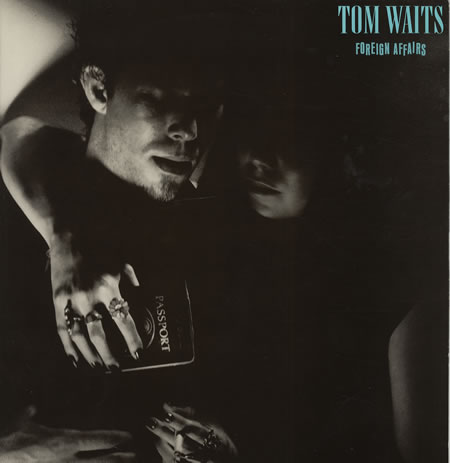
Foreign Affairs
1977
(7.4)
19
While far from a dud, Foreign Affairs is generally regarded as the runt of the litter from Tom Waits’ years with Asylum Records. Lacking the wall-to-wall classic songs of Closing Time and Small Change, the unique character of Nighthawks at the Diner, or the consistency of The Heart of Saturday Night and Blue Valentine, it’s understandable why Foreign Affairs would fall to the bottom of the pack. However, there’s a somewhat deeper issue with the album.
Put simply, at this point Waits seemed to be spinning his wheels. Though his songwriting would revert back toward the mean on Blue Valentine, and he would deepen the exploration of character with Heartattack and Vine, the lonely balladeer persona was wearing a bit thin by the time of album number five. Fortunately, in time, Waits would find new inspiration in even seedier settings than late-night bars.
One for the playlist: The highlight of a comparatively weak Waits album, “Burma-Shave” is the track most worth salvaging from Foreign Affairs. It’s another intimately captured piano ballad, and a particularly good one.
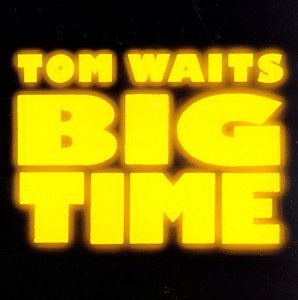
Big Time
1988
(7.6)
18
One could quibble about track listings – the arresting version of “Shore Leave” from the accompanying film is conspicuously absent – but Tom Waits’ first official live album is a more-than-solid listen. While on a smaller scale than the decade’s truly great concert film (Talking Heads’ Stop Making Sense) one finds themself missing the visuals while taking in Big Time as a solely auditory experience. However, the spirited performances and uniformly great material make for a worthwhile addition to the Waits discography.
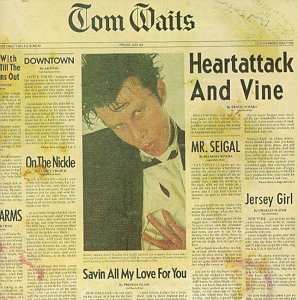
Heartattack and Vine
1980
(7.8)
17
Tom Waits’ final album for the Asylum label, 1980’s Heartattack and Vine represents a career departure in more ways than one. Although it sounds like something of a half-measure in hindsight, the album found Waits taking a clear and definitive step toward his artistic reinvention of the eighties.
Still largely tethered to the small, traditional combo (plus occasional string embellishment) arrangements of his earlier work, the vocal performances on Heartattack and Vine were Waits’ gruffest to date – particularly on the opening title track, which anticipates the greater departure to come. Aside from that highlight, the album’s best remaining tracks are those that found Waits in “bawler” mode: particularly the centerpiece “Jersey Girl,” and the closing “Ruby’s Arms.”
One for the playlist: I’m gonna end up with a lot of potential playlist closers here, but “Ruby’s Arms” has always struck me as the best track from Heartattack and Vine. While a case could be made for “Jersey Girl,” “Ruby” has one of those deeply-affecting melodies that Waits’ vulnerable voice pulls off perfectly.
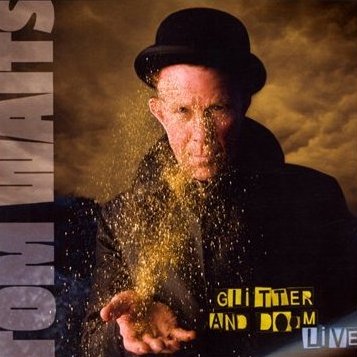
Glitter and Doom Live
2009
(8.0)
16
Not to brag, but I’ve had some pretty fantastic luck scoring hard-to-acquire concert tickets in my time: last-minute front-row seats for the first leg of U2’s ZooTV tour at the age of twelve; the first big reunion shows for Pixies, Pavement, and Guided by Voices (the latter two at the Matador at 21 celebration in Las Vegas); Neutral Milk Hotel twice. One of my best scores was a pair of tickets to see Tom Waits on the 2008 Glitter and Doom tour (on opening night, no less). As any fan knows, Waits is a brilliant live performer, but full-blown tours have become increasingly rare occurrences since the mid-eighties.
2009’s Glitter and Doom Live was a fine souvenir for those of us who were lucky enough to catch one of these shows, and a solid consolation prize for those who missed out. While some of the “busier” arrangements come off as a bit muddy, and the visuals – including Waits kicking up dust every time he stomped on the stage – are missing, it’s still a quality approximation of what remains Waits’ last tour to date.
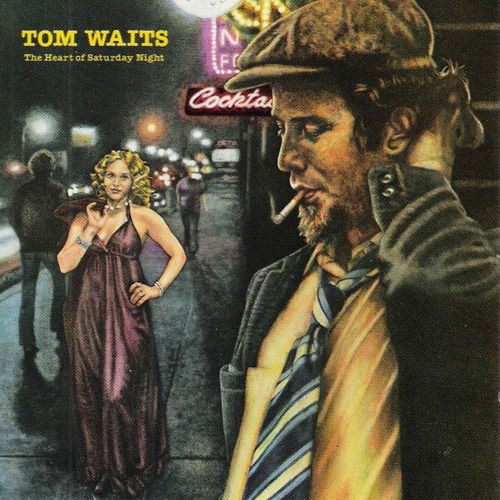
The Heart of Saturday Night
1974
(8.1)
15
Released a year-and-a-half after Closing Time, The Heart of Saturday Night found Tom Waits exploring similar lyrical themes, but conjuring up little of the musical atmosphere that had permeated his debut album. If Closing Time felt organic in its documentation of life after the party, there are elements of Saturday Night that almost border on parody. Waits dials up his inner Beat Poet throughout, but at times it feels more like an affectation than sincere.
That’s not to say that The Heart of Saturday Night is a failure; only that when judged by the formidable debut that preceded it, and the unique concept of the album that followed, it feels slightly flat by comparison. With that said, Waits’ sophomore release has plenty to endear it to fans. Its best tracks would find him retaining the vulnerability of Closing Time, while taking a meaningful step toward the more distinctive voice that would emerge on Nighthawks at the Diner and Small Change. Knowing where he would end up, Saturday Night begins a transition that would take nearly a decade, but it still presents a formidable talent on the verge of tapping into something even better.
One for the playlist: Though I could make a case for “San Diego Serenade,” it’s “(Looking For) The Heart of Saturday Night” that stands as the highlight of Waits’ second album. Its intimate production makes for one of the most affecting moments of his early recording career.
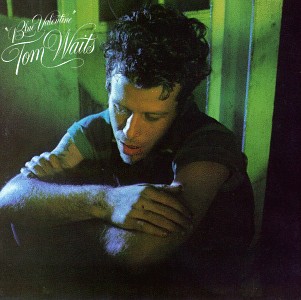
Blue Valentine
1978
(8.2)
14
A rebound from 1977’s Foreign Affairs, Blue Valentine doesn’t break much new ground stylistically – except perhaps for the somewhat divisive opening take on Stephen Sondheim’s “Somewhere” – but it’s a confident set of songs. More than anywhere else in his catalog to date, Blue Valentine finds Tom Waits embracing the idea of musical space. Several pieces – in particular the closing title-track – have arrangements that could be best described as “skeletal,” linking Waits to the grand tradition of torch singers, such as Julie London and Chet Baker. Something of a dark horse favorite among the Asylum releases, Blue Valentine may not be the most immediately striking record in Waits’ catalog, but there is a depth to the album that reveals itself with familiarity.
One for the playlist: One of the easiest choices for this list, “Christmas Card From a Hooker in Minneapolis” towers over the rest of Blue Valentine‘s tracklist. It’s a beautifully tragic and sympathetic portrait of one of Waits’ most downtrodden characters, and a masterful piece of songwriting.
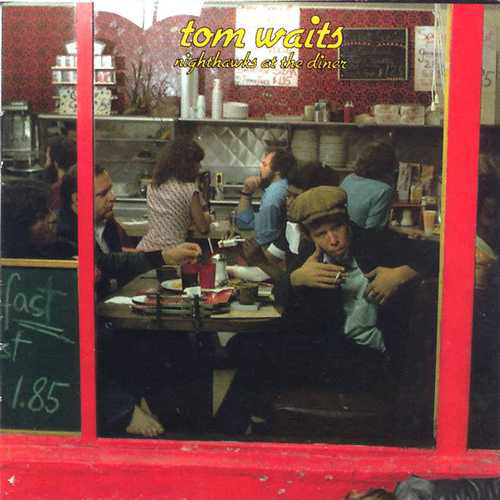
Nighthawks at the Diner
1975
(8.3)
13
Tom Waits’ third album, 1975’s Nighthawks at the Diner, represented a bold step in a new direction. Leaning fully into the late-night affectations of his first two releases, Nighthawks is effectively a “live” concept album – one in which Waits plays the part of the entertainer in a fictional nightclub. Recorded in front of a small studio audience, it sounds like little else in his – or anyone else’s – catalog.
For a songwriter who, to date, had largely built his career on sincere ballads, the emphasis on humor throughout Nighthawks comes as something of a surprise, but this element would become a vital part of Waits’ artistry moving forward. Built around a series of lengthy, evocative narratives – many of which lean heavily into the Beat stylings from which he had already drawn significant inspiration – the album would present Waits’ first heavy foray into character creation. This would – in time – have a liberating effect on his work, but even on its own, Nighthawks is a splendid listen.
One for the playlist: The freewheeling “On a Foggy Night” not only harkens back to Waits’ roots as a jazz singer, but it is one of the tracks from Nighthawks that can best stand outside of the context and unique atmosphere of the album.
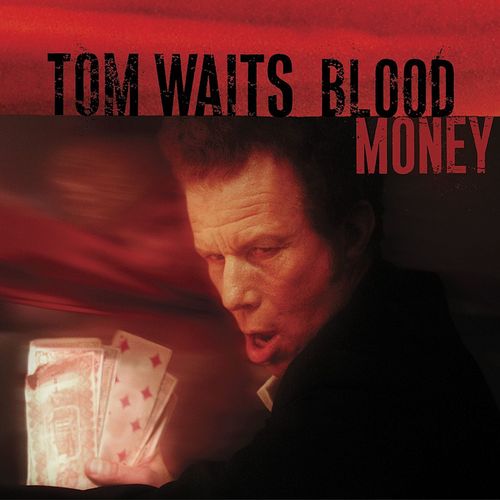
Blood Money
2002
(8.4)
12
Tom Waits released two albums on the same day in May 2002. Their simultaneous release, and shared connections to plays by Robert Wilson, ensured that the albums would be forever linked – check the next entry on this list – but these records were their own unique entities. In the terminology of “brawlers” and “bawlers” that Waits would describe on a later collection, Blood Money veered toward the former, while its companion piece, Alice, emphasized the latter.
As misanthropic as 1992’s bleak classic Bone Machine, Blood Money practically revels in darkness. Just a look at a handful of song titles (“Misery is the River of the World,” “Everything Goes to Hell,” “God’s Away on Business,” “A Good Man is Hard to Find”) gives one a sense of the pessimism contained within these songs, but Waits approaches the apocalypse with his signature black humor fully intact, and his voice shredded to a fittingly gnarled growl.
One for the playlist: Blood Money reaches its demented peak on the centerpiece, “God’s Away on Business.” Plus, maybe a few Waits newbies will recognize it from that Cookie Monster video from several years back.
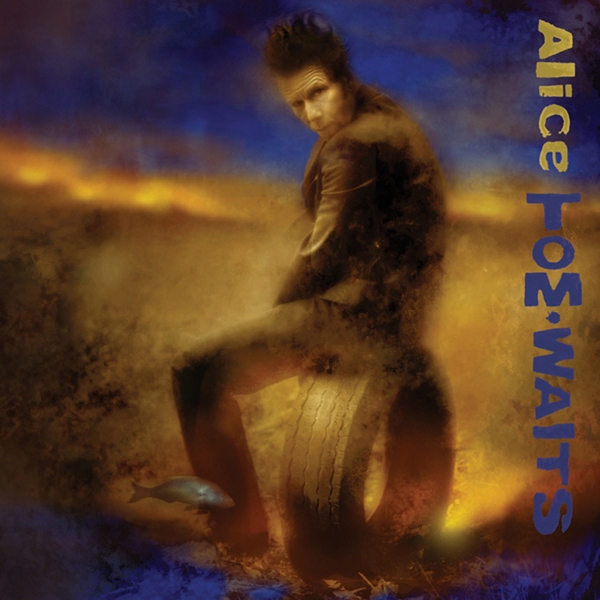
Alice
2002
(8.4)
11
Whereas Blood Money was bleak, Alice is just plain sad. Written for the Robert Wilson play of the same name, the album is largely based on speculation into the nature of the relationship between Lewis Carroll and young Alice Liddell – the real-life inspiration for Carroll’s most famous work, Alice in Wonderland.
A melancholic presence hangs over Alice, whether in the gorgeous imagery of the title track’s tale of forbidden love, the sparse jazz-inspired arrangements throughout, or the tragic story of the singularly-cursed Edward Mordake. Only the jarringly swinging “Kommienezuspadt” provides any sort of respite – though that track is plenty unsettling in its own right. Blood Money may bring the fire, but Alice proves that the ice can be every bit as devastating.
One for the playlist: There are several fantastic songs to be found on Alice, but it’s the opening title track that looms over the rest of the album like a dreamy haze. One of the finest songs in Waits’ discography, “Alice” is a beautiful and haunting piece that straddles the line between love and obsession.
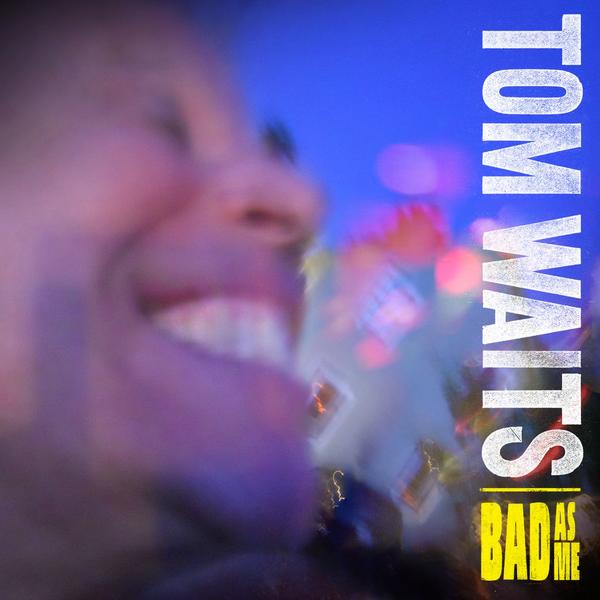
Bad as Me
2011
(8.6)
10
Serving as a primer of sorts for a career that now spans over half a century, Bad as Me offers a condensed summation of practically everything that Tom Waits excels at. Rather than breaking any new stylistic ground, it comes off as a victory lap, following a surprisingly productive – and consistently brilliant – decade of work. Perhaps the only legitimate gripe about Bad as Me isn’t really about the album itself, but instead, the fact that ten years after its release, it remains the most recent Tom Waits album.
One for the playlist: There’s a part of me that really wants to rep the underrated closer, “New Years Eve,” but the general consensus is that Bad as Me‘s best moment is the chilling “Hell Broke Luce.” I’m inclined to agree, as the track captures a particularly nightmarish atmosphere to stunning effect.
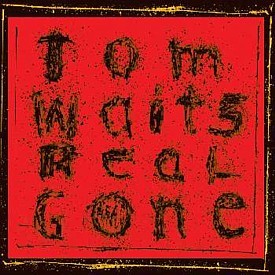
Real Gone
2004
(8.6)
9
Released a month before the re-election of George W. Bush, 2004’s Real Gone was heavily informed by contemporary American politics, much of which surrounded the increasingly-divisive war in Iraq. Across tracks like “Hoist That Rag,” “Sins of the Father,” and (especially) “Day After Tomorrow,” Tom Waits sends transmissions of spilled blood and smoke-filled skies, delivered in vivid, but matter-of-fact language that made his previous apocalyptic missives seem like little more than theatrics.
The most overtly topical album in Waits’ catalog is also the rawest from a musical perspective, at least depending on which version you’re playing. To the consternation of many fans, Real Gone was remixed for its 2017 reissue, sanding down some of the rougher edges of the original release. Purists will gripe – and I don’t particularly blame them – but driven by the guitar work of the incomparable Marc Ribot, and Waits’ commanding vocals throughout, Real Gone remains a powerful listen, no matter which version you have in your collection.
One for the playlist: Few tracks in Waits’ discography leave a more indelible mark than “Hoist That Rag.” Marc Ribot’s instantly recognizable presence meshes with the ramshackle rhythms and gruff howl of Waits at his most visceral.
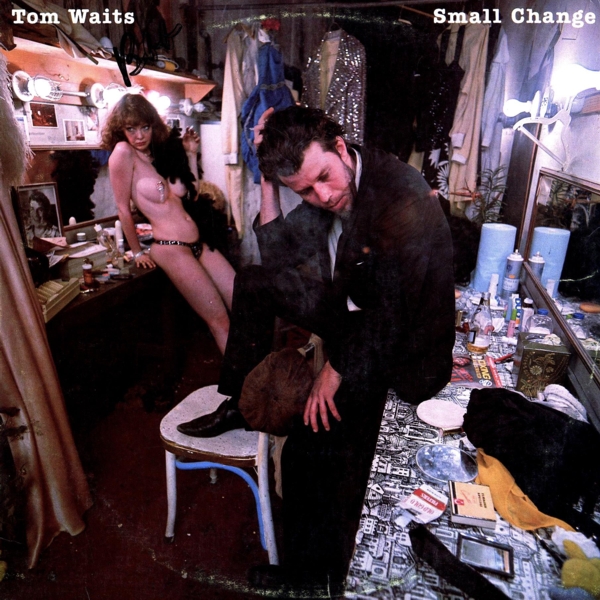
Small Change
1976
(8.9)
8
Small Change may have felt like only a half-step compared to what he would become in the eighties, but there were more than a few indicators of significant artistic growth on Tom Waits’ fourth album. Though it had peeked in from behind the curtain on 1975’s Nighthawks at the Diner, Small Change really marks the arrival of the gravelly voice that Waits would become known for. Sounding both wise and ragged beyond his years, the album deepens the persona behind the music.
From a songwriting perspective, Small Change was at least Waits’ best collection of tracks since his debut – and, in the viewpoint of many fans, his best to date. The character sketches that had sprung to life on Nighthawks are interweaved with a first-hand perspective that add a rich nuance to the balladeer that had last roamed the lonely halls of The Heart of Saturday Night. It’s a fantastic record, one that balances pathos and humor to impressive – and often devastating – effect.
One for the playlist: Several fantastic tunes here, but it’s gotta be “Tom Traubert’s Blues (Four Sheets to the Wind in Copenhagen).” Among the many, many great songs in Waits’ catalog, it may represent the very peak of his craft.
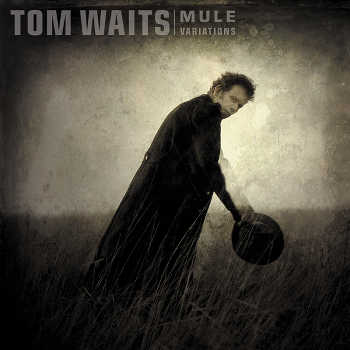
Mule Variations
1999
(8.9)
7
This is a tough one for me. While Mule Variations was widely hailed as an instant-classic upon its release, I’ve had a hard time elevating it to the absolute inner circle of Tom Waits’ greatest albums. Arriving six years after his previous release, Mule Variations was the first album of what might be considered Waits’ “elder statesman” phase, and in some ways, the cynic in me can’t help but see it as a record that made a deliberate play for the VH1 crowd.
Firmly established as a genuine eccentric, but respected in even the most mainstream circles as a songwriter of the highest caliber, Mule Variations found Waits largely volleying back-and-forth between two modes: carny barker and sincere balladeer. While he had been doing this to a degree ever since 1983’s Swordfishtrombones, the “variations” here seem mostly black and white, rather than the many shades of grey that Waits had occupied before.
With all that said, the Tom Waits of Mule Variations may have been an elder statesman, but he was also a craftsman. There’s no denying the greatness of the best of these tracks – really, check the rating/ranking – several of which stand among the finest work in his discography.
One for the playlist: While some of the ballads on Mule Variations veer toward the overly sentimental, Waits best hits the aforementioned grey area on the closing “Come On Up to the House.” It’s a rousing, spirited finale to one of the most important entries in his catalog.
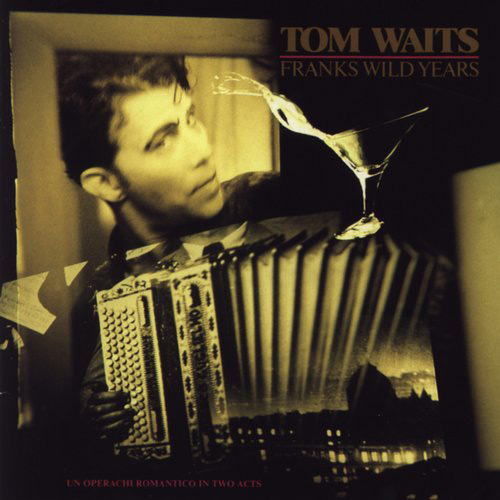
Franks Wild Years
1987
(9.0)
6
A dark horse favorite of many Tom Waits fans, Franks Wild Years closes out a trilogy of sorts that also includes 1983’s Swordfishtrombones and 1985’s Rain Dogs. While the album is of a certain stylistic unity with those records – and is a logical next step for listeners pulled in by Waits’ most acclaimed work – Franks Wild Years‘ sprawling nature makes for an album that is more of a “grower” than its predecessors, but one of considerable merit.
Originally conceived as the soundtrack to a play (“Un Operachi Romantico in Two Acts“), much of Franks Wild Years bears the stamp of scene setting. Where the record truly excels is in its more fully-formed pieces – each of which are capable of standing apart from any greater narrative thread. Tracks such as “Hang On St. Christoper,” “Way Down in the Hole,” and the closing quartet of songs, all demonstrate a master songsmith near the peak of his powers.
One for the playlist: There are some excellent contenders here, but it’s the closing “Innocent When You Dream (78)” that gets the nod. One of Waits’ most beautiful melodies and sentiments, it stands among my absolute favorite tracks in his catalog.
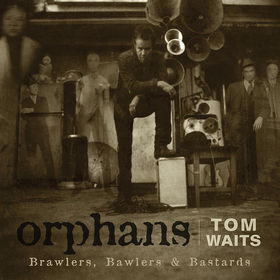
Orphans: Brawlers, Bawlers & Bastards
2006
(9.1)
5
I already had a few of the essential Tom Waits albums by the time that Orphans was released in 2006, but it was digging through the expansive set that really solidified my fandom. Divided into three differently-themed collections – each representing one generalized facet of his musical personality – Orphans is a mix of both old and new tracks, but one that hangs together as a unified piece of art.
The first set, Brawlers, is Waits in fighting form – rollicking tracks that emphasize the jagged edges of his compositional and performing skills. Bawlers is the most affecting set, featuring a consistently great – and remarkably varied – collection of ballads. Rounding out the collection, Bastards is a fascinating grab bag of spoken-word tracks, stage banter, and various oddballs that never found a home on earlier releases.
All in all, Orphans presents itself as an alternate-history anthology of a brilliant artist. It’s not the absolute greatest work in his discography, but the scope and depth of these stray tracks is little short of astonishing.
Three for the playlist: Okay, one from each set. For Brawlers, the opening “Lie To Me” stands out as a definite highlight, with its slap-echo vocals providing a great throwback to fifties-era rock and roll. Bawlers has the most strong contenders, but “Long Way Home” edges out the competition ever so slightly. As for Bastards, I’ve always loved the wonderfully cozy atmosphere created in Waits’ reading of Charles Bukowski’s “Nirvana,” so it gets the nod.
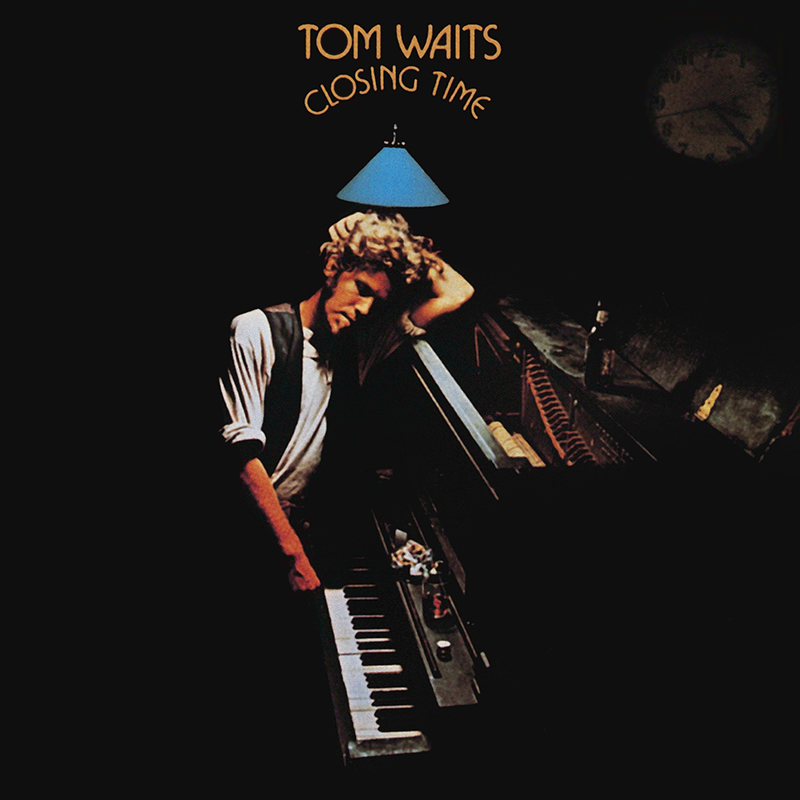
Closing Time
1973
(9.3)
4
The archetypal “bar balladeer” album, Tom Waits’ debut may not clue its listeners into the multi-faceted artist that he would eventually become, but it remains one of his greatest works regardless. Released in early 1973, Closing Time presented a fully-developed singer-songwriter, albeit one who would seek to retreat from its style almost immediately.
While it’s easy to pigeonhole Closing Time as something of a caricature, that neglects to acknowledge the wonderful subtleties that keeps it from drifting into parody: the beautifully-reverberated piano throughout; the charming melody line that manages to stumble upwards during the chorus of “Midnight Lullaby,”; the understated vocal harmonies toward the end of the immortal “Martha.” All of these elements lend Closing Time a pathos that avoids the triteness found in so many of its singer-songwriter contemporaries – and one that would deeply inform Waits’ more idiosyncratic works.
Closing Time is one of the truly great “wee small hours” records. I realized this in particular during the summer of 2007, often finding myself in what felt like “Waits-ian” situations in which the album provided a perfectly complementary soundtrack, even when it wasn’t playing: a book/record store I frequented that stayed open until midnight; post-practice bull sessions with bandmates that stretched on for hours; an overnight drive through the desolate Four Corners region; an Amtrak station before daybreak. I wouldn’t have described myself as a “lonely” person at that time – or even now, really – but in forty-five-minute increments from which I had the luxury of an easy retreat, Closing Time gave me just enough of a view into the “lonely” world to see the beauty and romance of it.
One for the playlist: I’d love to include a personal favorite like “Midnight Lullaby” or “Lonely,” but I can’t call a song immortal only to exclude it from the playlist. “Martha” is an all-timer – one of the greatest tearjerker ballads ever written.
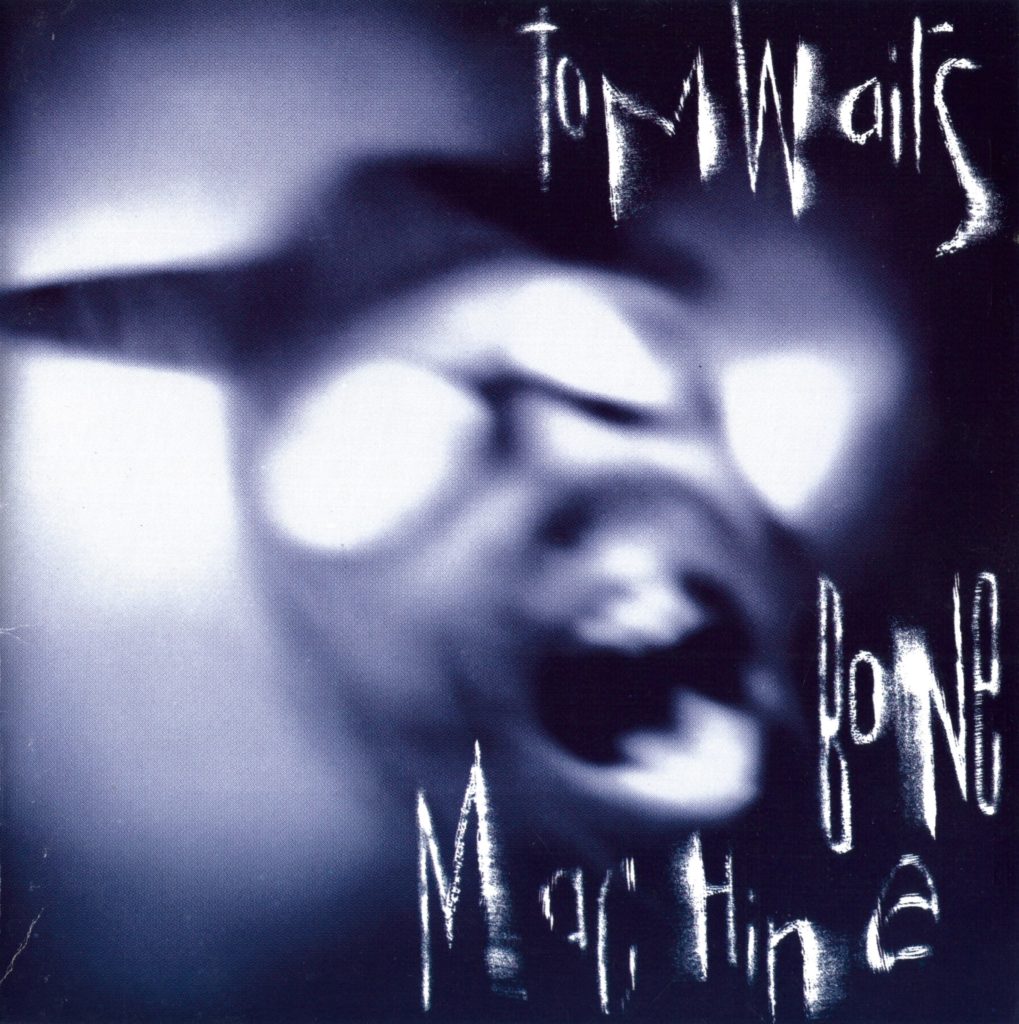
Bone Machine
1992
(9.4)
3
While Tom Waits has always traded in dark humor and frequently flirts with the macabre, 1992’s Bone Machine looms particularly large in this aspect of his artistry. Right out of the gate, the record establishes a heavy atmosphere in its opening pair of tracks (“Earth Died Screaming” and “Dirt in the Ground”), and contains more than enough disturbing imagery throughout to earn the oft-used descriptor of apocalyptic.
However, don’t go into Bone Machine expecting nothing but unremitting bleakness. Rarely content to linger in one place for too long, Waits counters the dark with light, and plenty of shade in-between. It’s the juxtaposition of the extremes – and the immediacy created by the album’s intimate production – that make Bone Machine such a fascinating entry in his catalog.
One for the playlist: My favorite song on Bone Machine is the late-album highlight, “I Don’t Wanna Grow Up,” but if the purpose of this playlist is to convert the skeptical, I’ll pick “Goin’ Out West.” It’s the most immediate track on the album, and arguably the most badass moment in Waits discography.
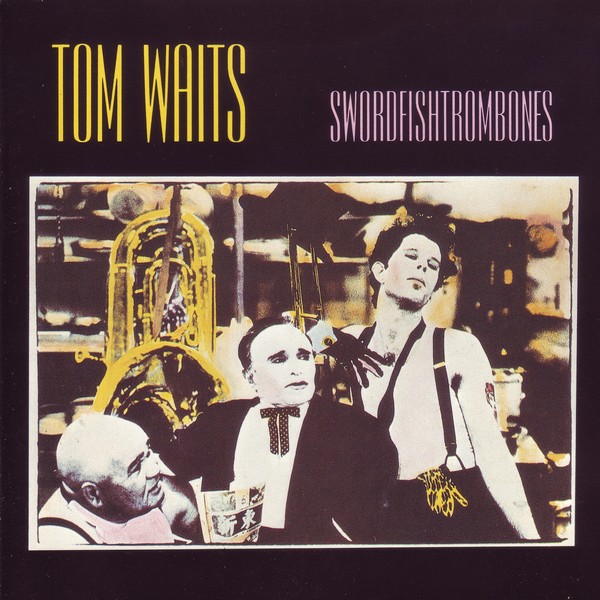
Swordfishtrombones
1983
(9.8)
2
The fulcrum point of Tom Waits’ discography, 1983’s Swordfishtrombones is an artistic reinvention with little precedent – and few equals – in the history of popular music. Hailed as a masterpiece upon its release, the album found Waits diving into the seedy underbelly of Americana, fashioning a fascinating song cycle of remarkable depth and nuance. While there is no single narrative thread to Swordfishtrombones – although its recurring allusions to a war veteran have led to some speculation about an overarching story-line – the album hangs together as Waits’ most holistic work, due to both its uniform excellence and commitment to mood.
Though the songwriting is consistently great, it’s the album’s unconventional instrumental arrangements that represent the clearest delineation between Swordfishtrombones and Waits’ earlier work. Throughout, his talented cast of supporting musicians provide accompaniments that emphasize both the absurdity and the weightiness of the subject matter. It’s a remarkable balancing act – impressive to behold, but never showy or detracting.
From the outset of his career, Tom Waits demonstrated an extraordinary ability to translate the specific to the universal. It was in his deepest dive into the realm of the downtrodden that Waits would make his boldest, and best, artistic statement yet.
One for the playlist: As I mentioned earlier, it’s disappointing leaving “Soldier’s Things” on the table, as it was the song that made Tom Waits finally “click” for me. There are just too many great tracks on this one to go with the sentimental pick. As such, I’ll split the difference, and go with the other personal favorite, “In the Neighborhood.” Unfortunately, that leaves some great ones (“Underground,” “Shore Leave,” “16 Shells From a Thirty-Ought-Six,” “Swordfishtrombones”) behind.
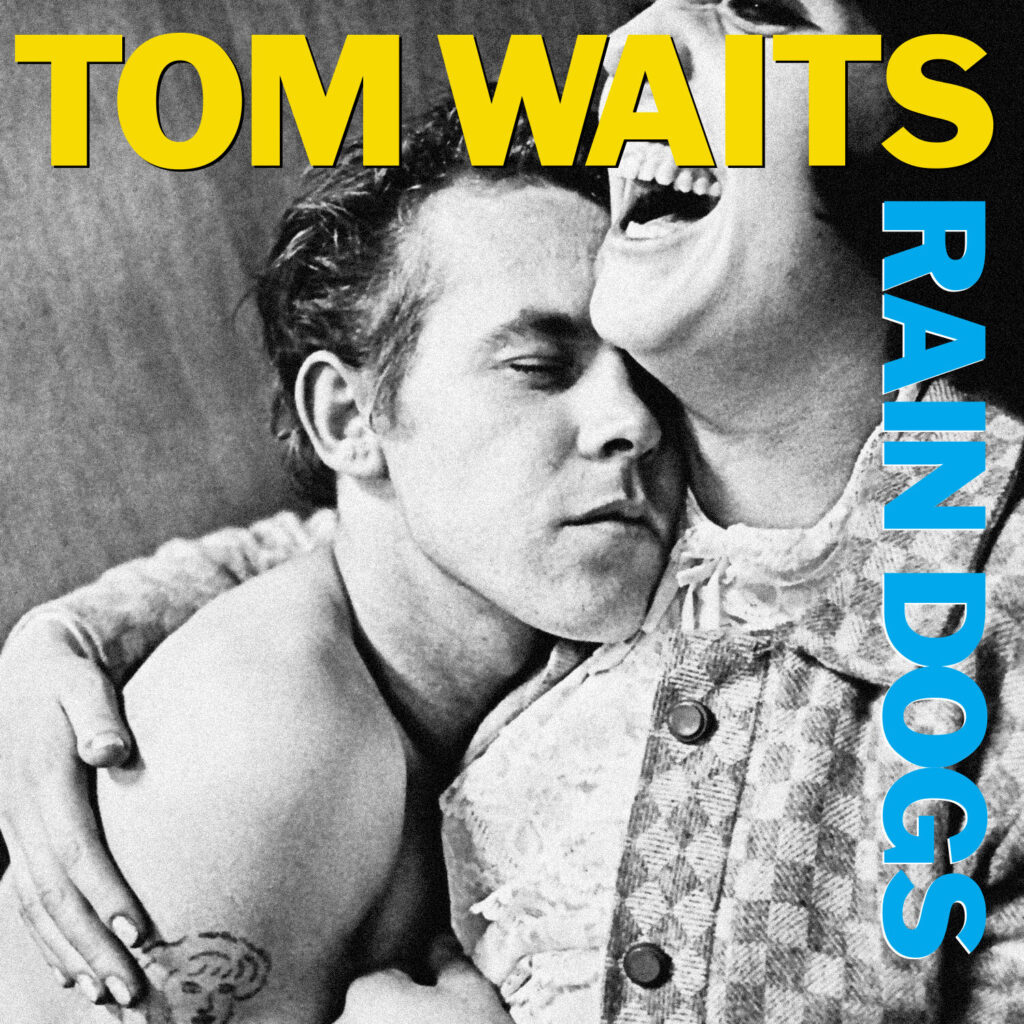
Rain Dogs
1985
(10.0)
1
For all of the brilliance of Swordfishtrombones, Tom Waits would reach an even greater pinnacle with its follow-up, 1985’s Rain Dogs. A master class in songwriting, with a dizzying array of brilliant instrumental flourishes, the album would turn an already impressive career into a legendary one, and make Waits one of the most celebrated artists of his era.
The Blonde on Blonde to Swordfishtrombones‘ Highway 61 Revisited, Rain Dogs is a sprawling affair – one that takes the dense, compact nature of its predecessor, and expands it like an accordion bellows, without losing any of its capacity to stun. Whereas Swordfishtrombones opens with an invitation to the underground, Rain Dogs pushes outward. Its cast of downtrodden characters inspire Waits to an even wider range of vocal acrobatics, from the vulnerable lament of “Time,” to the warped nightmare that is “Cemetery Polka.”
It’s easy to get caught up in the stylistic affectations of Rain Dogs, at the expense of noting its considerable depth. When I first heard the record – my introduction to Waits – I had a hard time deciding if it was even intended to be taken seriously. It wasn’t until circling back to the album, by way of Closing Time and Swordfishtrombones, that I had become acclimated enough to Waits’ artistry to meet Rain Dogs on its own terms. Though parallels can be found – within and beyond Waits’ catalog – it is a truly singular piece of work.
One for the playlist: Well, damn. Even more than Swordfishtrombones, Rain Dogs is a collection of brilliant individual pieces. Simply put, this album belongs in any collection. As for the task at hand, I’ll go with “Rain Dogs” over my immediate runners-up (“Hang Down Your Head” and “Time”) as it does more to show off the instrumental range of a remarkable record.

